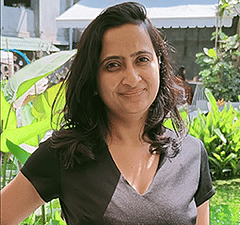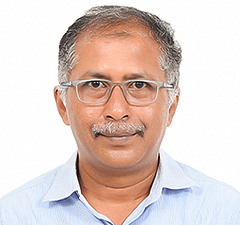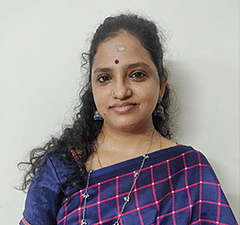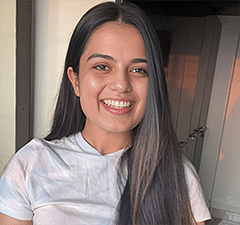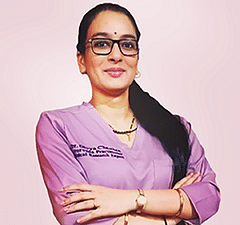National Cancer Awareness Day a move to combat cancer
Last updated on : 20 Jun, 2024
Read time : 10 min
In September 2014, Dr. Harsh Vardhan, the Indian Union Minister for Health and Family Welfare, made the initial announcement that the 7th of November would be celebrated annually as National Cancer Awareness Day. This was done in an effort to raise public awareness about the importance of detecting cancer early and avoiding behaviours that increase one’s risk of developing the disease.
National Cancer Awareness Day coincides with the birthday of Madame Curie (Wikipedia), a Nobel Prize-winning scientist. Marie Curie is best known for discovering radium and polonium and making a huge difference in the fight against cancer. Her work led to the creation of nuclear energy and radiotherapy, which are both used to treat cancer.
Let’s shed some light on Cancer:
Worldwide, the incidence of cancer is by far the leading cause of death and illness. Cancer is described as a disease in which some of the cells in the body proliferate in an uncontrolled manner and spread to other parts of the body.

In a cell’s life cycle, it divides to grow and multiply when they receive signals to do so. Later these cells grow old or get damaged and are replaced by new ones. When this process is disturbed i.e. if cells divide uncontrollably; they form lumps of tissue called tumour. It can be benign (harmless) or malignant (spread over other or adjacent tissues).
What are the risk factors for developing Cancer?
Cancer happens when normal cells change into tumour cells. This is a multi-step process that usually goes from a precancerous lesion to a malignant tumour. The predisposing factors for developing cancer are genetic interference with external factors such as:
- physical cancer causing agents- ultraviolet and ionising radiation;
- chemical cancer causing agents – asbestos, components of tobacco smoke, alcohol, aflatoxin (a food contaminant), and arsenic (a drinking water contaminant); and
- biological cancer causing agents – infections from certain viruses, bacteria, or parasites.
Cancer and other noncommunicable illnesses are linked to tobacco, alcohol, food, inactivity, and air pollution. Chronic infections can cause cancer in developing nations. Helicobacter pylori, HPV, hepatitis B, C, and Epstein-Barr viruses caused 13% of malignancies worldwide in 2018.
Types of cancer
Carcinoma –
The most common type of cancer is called carcinoma. They are made up of cells called epithelial cells, which cover the inside and outside of the body. Different body parts are lined by different epithelial cell types that have specific names:
- Adenocarcinoma is a cancer that is formed in tissues formed by epithelial cells that produce fluids or mucus sometimes called glandular tissues. Examples of adenocarcinomas are breast, colon, and prostate.
- Cancer that originates in the lower or basal (base) layer of the epidermis, the outermost layer of skin is called basal cell carcinoma.
- Squamous cells, epithelial cells just beneath the epidermis, develop squamous cell carcinoma. The stomach, intestines, lungs, bladder, and kidneys also have squamous cells. Under a microscope, squamous cells resemble fish scales.
- Transitional cell carcinoma is cancer that develops in the linings of the bladder, ureters, a portion of the kidneys (renal pelvis), and a few other organs including this tissue, which is composed of many layers of epithelial cells that can grow and shrink. The bladder, ureters, and kidneys can develop transitional cell carcinomas.
- Sarcomas are cancer that develop in bone and soft tissues such as muscle, fat, blood vessels, lymph vessels, and fibrous tissue (such as tendons and ligaments). Most bone cancers are osteosarcomas.
- Leukaemia is a type of cancer that begins in the blood-forming tissue of the bone marrow.
- Cancer that starts in lymphocytes(white blood cells) is called lymphoma (T cells or B cells). These are components of the immune system, combat disease. In lymphoma, aberrant cells accumulate in the body’s lymph nodes, lymph arteries, and other organs.
- Multiple Myeloma is cancer that begins in abnormal plasma cells, another type of immune cell called myeloma cells. These cells build up in the bone marrow and form tumours in bones all through the body.
- Melanocytes, which produce melanin, start melanoma (the pigment that gives skin its colour). Melanomas can form in pigmented tissues like the eye, but most form on the skin.
- Brain and Spinal Cord Tumours are named after their cell type and central nervous system location. Astrocytes, star-shaped brain cells that protect nerve cells, start astrocytic tumours.
Cancer Detection and Treatment:
Cancer deaths can be averted if detected and treated in the early stages.
Early diagnosis means knowing the signs of different types of cancer and how important it is to see a doctor for clinical evaluation and access to diagnostic services when something seems abnormal.
The goal of screening is to find people who have signs of certain cancer or pre-cancer before they have any symptoms. When abnormalities are found during screening, more tests should be done to make a final diagnosis, and if cancer is found, the person should be sent to a doctor for treatment.
A correct cancer diagnosis is necessary for effective treatment since each type of cancer needs a different treatment plan. Surgery, radiation therapy, and/or systemic therapy are often used to treat cancer (chemotherapy, hormonal treatments, targeted biological therapies). When choosing a treatment plan, it is important to think about both cancer and the person being treated. To get the best therapeutic result, it is important to finish the treatment protocol in a set amount of time.
Read more– Foods to Eat During Chemotherapy
Once the treatment plan is figured out, it is also important to make the patient’s life better. This can be done by taking care of the patient’s physical, mental, social, and spiritual health and giving them palliative care when their cancer is getting worse.
Some of the most common types of cancer, like breast cancer, cervical cancer, oral cancer, and colorectal cancer, have a high chance of being cured if they are found early and treated correctly.
Statistics on cancer:
The GLOBOCAN 2018, reported 18.1 million new cancer cases and 9.6 million deaths globally. As per the National Cancer Registry Programme report 2020, the estimated number of people with cancer: is around 2.7 million.
The overall risk of developing cancer in Males – 1 in 68
The overall risk of developing cancer in Females – 1 in 29
The total number of deaths due to cancer in the year 2020 were 8,51,678 of which males were 4,38,297 and females were 4,13,381.
Oral cavity, stomach, and lung cancers account for over 25% of male cancer fatalities, while uterine cervix, breast, and oral cavity cancers account for 25% of female malignancies.
The top five cancers in men and women account for 47.2% of all cancers; these diseases can be avoided, checked for, discovered, and treated early.
Top 5 Cancer types in Male and Female

| Sr. No. | Male | Female |
| 1 | Lip/oral cavity | Breast |
| 2 | Lung | Cervix Uteri |
| 3 | Stomach | Ovary |
| 4 | Colorectal | Lip/oral cavity |
| 5 | Oesophagus | Colorectal |
Highlights of National Cancer Awareness Day
Even though the incidence of cancer in India is significantly lower than in developed nations, the death rate is greater due to late detection, which can be attributed to a wide variety of factors. In order to prevent further loss of life caused by this fatal condition, it is critical that awareness about it be raised and spread.
In India, one woman dies of breast cancer for every two women who are diagnosed with it. This alarming trend signifies the need of knowing how to spot it early on. Health Education to women from all communities should be given regarding self-breast examination which includes the technique of how it should be performed periodically by women at home, seven days before and after menstruation. With your arms at your sides, stand in front of a mirror and scan your breasts for any changes in size, shape, or placement. Keep an eye out for sores, skin changes, and skin discolouration. Examine the nipples for peeling, size and orientation changes, whether they have retracted, and the presence of any discharge. Make an appointment with your doctor and schedule regular testing if you have any concerns.
The main goals of National Cancer Awareness Day are raising awareness of early detection and avoiding cancer-causing lifestyle choices. Lifestyle changes and good health practices can prevent causing cancer. Some of the important lifestyle changes that one can make are:
- not using tobacco;
- maintaining a healthy body weight;
- eating a healthy diet, including fruit and vegetables;
- doing physical activity on a regular basis;
- avoiding or reducing consumption of alcohol;
- getting vaccinated against HPV and hepatitis B;
- avoiding ultraviolet radiation exposure
- ensuring safe and appropriate use of radiation in health care (for diagnostic and therapeutic purposes);
- minimising occupational exposure to ionising radiation;
On National Cancer Awareness Day, share information about cancer prevention with your coworkers and friends. Visit government hospitals and clinics for free health examinations. There are numerous awareness/Health Education programmes organised by the government, such as the distribution of pamphlets on this day regarding cancer awareness, prevention techniques, and symptoms. All of these measures are required for early diagnosis and treatment.
If you want any information regarding cancer signs and symptoms, detection and treatments you can get teleconsultation from our expert doctors. In case those who are undergoing cancer treatment can avail of medication at discounted prices from Truemeds and get it delivered to your doorstep across India.
FAQs
Dr. Harsh Vardhan, Indian Union Minister for Health and Family Welfare, declared 7th November as National Cancer Awareness Day in September 2014. This was done to promote early cancer detection and treatment.
Stomach, Oesophagus, colorectal, lung cancer and oral cancers are some of the most common cancers that affect males.
Physical cancer-causing agents include ultraviolet and ionising radiation; chemical cancer-causing agents include asbestos, tobacco, smoke, alcohol, aflatoxin (a food contaminant), and arsenic (a drinking water contaminant); and biological cancer-causing agents include infections from certain viruses, bacteria, or parasites.
You can lower your chances of developing cancer by adopting more healthy decisions, such as maintaining a healthy weight, avoiding tobacco products, reducing alcohol consumption, getting vaccinated against HPV and hepatitis B, and protecting your skin from sun damage.
Reference:
- Dr Harsh Vardhan revives National Cancer Awareness Day (pib.gov.in)
- What Is Cancer? – NCI
- Cancer (who.int)
- Global burden of cancer attributable to infections in 2018: a worldwide incidence analysis – PubMed (nih.gov)
- NCRP_2020_2012_16.pdf (ncdirindia.org)
- Cancer Statistics, 2020: Report From National Cancer Registry Programme, India – PubMed (nih.gov)
- Assessing national capacity for the prevention and control of noncommunicable diseases: report of the 2019 global survey (who.int)
- Global Cancer Statistics 2020: GLOBOCAN Estimates of Incidence and Mortality Worldwide for 36 Cancers in 185 Countries – PubMed (nih.gov)
Disclaimer
Our healthcare experts have carefully reviewed and compiled the information presented here to ensure accuracy and trustworthiness. It is important to note that this information serves as a general overview of the topic and is for informational purposes only. It is not intended to diagnose, prevent, or cure any health problem. This page does not establish a doctor-patient relationship, nor does it replace the advice or consultation of a registered medical practitioner. We recommend seeking guidance from your registered medical practitioner for any questions or concerns regarding your medical condition.
Popular Articles
Recommended Articles
Recent Articles
Top-Selling Medicines:
...View more
Top-Selling OTC:
...View more
Subscribe
Claim your complimentary health and fitness tips subscription and stay updated on our newest promotions.
Download Truemeds
Manage your health with ease Download Truemeds today!Get easy access to medicine refills, health information, and more. With our app, you'll never have to wait in line again. Download now and start taking control of your health.

Contact Us
Our customer representative team is available 7 days a week from 9 am - 9 pm.
v3.5.0
Our Payment Partners















